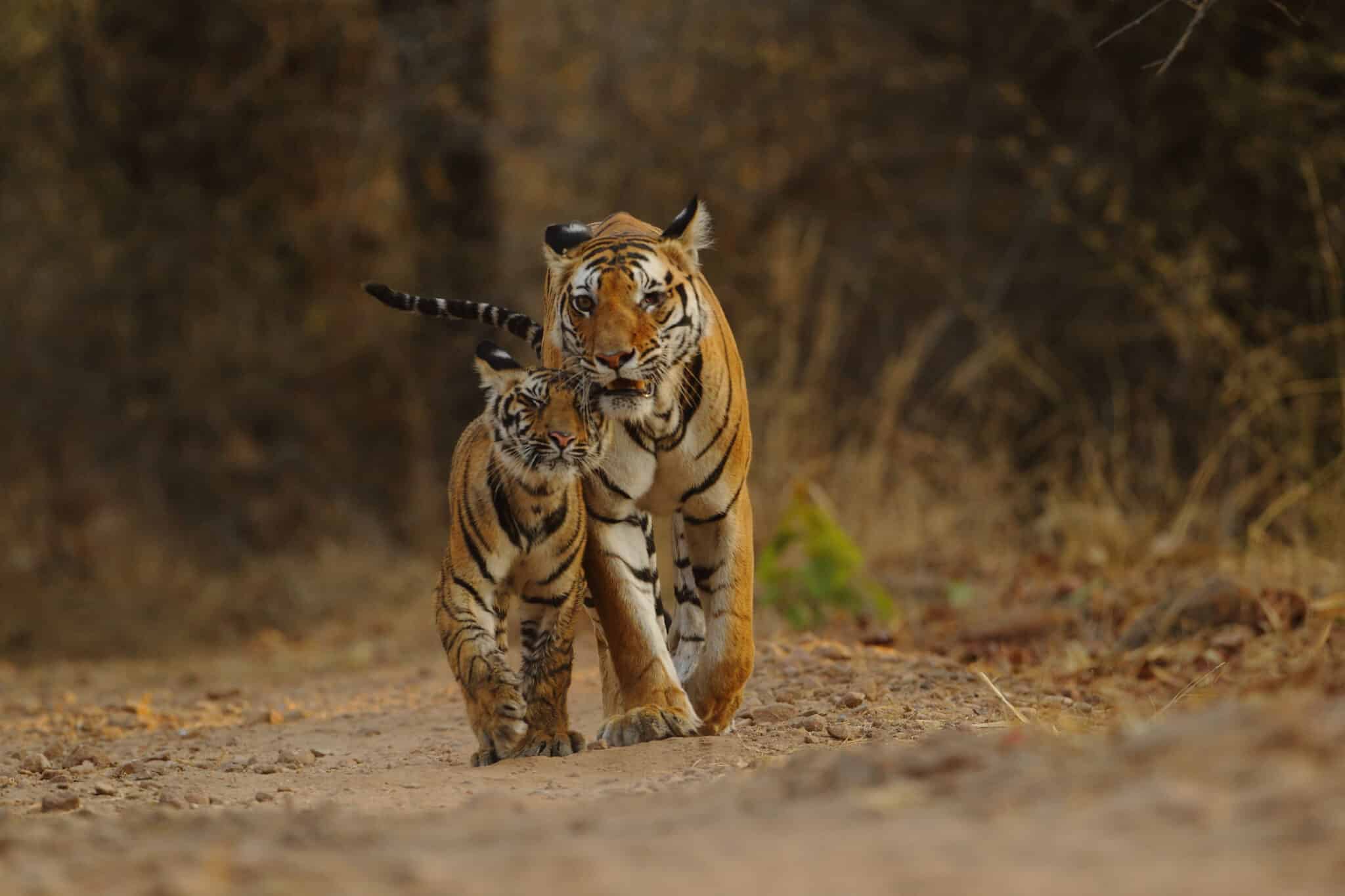Wild Tiger Numbers Up 40 Percent Since 2015 Assessment

 Why you can trust us
Why you can trust us
Founded in 2005 as an Ohio-based environmental newspaper, EcoWatch is a digital platform dedicated to publishing quality, science-based content on environmental issues, causes, and solutions.
Cat lovers rejoice! There are more wild tigers in the world than conservationists previously believed.
The news came in an update announced last Thursday to the International Union for Conservation of Nature’s (IUCN) Red List of Threatened Species. While tigers (Panthera tigris) are still considered Endangered, there are 40 percent more of them than was indicated by the last population assessment in 2015.
“Although we still have a very long way to go, the new assessment shows that the tiger can be saved,” Wildlife Conservation Society Tiger Program Coordinator Dale Miquelle said in a statement emailed to EcoWatch. “There are more wild tigers alive today than in 2010, the result of range-state governments and partners committing to very focused protection of the species and its habitats. The threats have not gone away and will not for a long time. But there is every reason to believe the world can have even more tigers a decade from now if we double down on that commitment.”
The new IUCN assessment determined that there are now between 3,726 and 5,578 tigers (not including cubs) roaming their range that includes East Asia, Southeast Asia and South Asia, an uptick attributed to more effective monitoring. In fact, the IUCN called it the “first reasonably rigorous estimate of global Tiger numbers, based largely on capture-recapture and occupancy methodologies.”
Further, the world’s population of tigers appears to be either stable or increasing, the IUCN said in its announcement. This indicates that the organization’s Integrated Tiger Habitat Conservation Programme is working. This is an effort launched in 2014 to double wild tiger numbers by 2022. It has three main goals: to protect tigers and their prey from poaching, to protect tiger habitats and to provide support for the human communities that share the landscape with tigers.
“The Red List Assessment determined that tigers are still considered Endangered and that is not a change from the last assessment. However, there was strong debate and a recognition that they were on the edge of moving towards Vulnerable. This fact, along with the global estimate of abundance, provide some evidence that there is improvement in the status of the global population of tigers,” Miquelle in a statement.
Conservation group WWF also has good news for tigers, as AFP reported, saying that numbers are beginning to improve after falling for around 100 years. Still, threats remain, principally poaching and habitat destruction for agriculture.
“Expanding and connecting protected areas, ensuring they are effectively managed, and working with local communities living in and around tiger habitats, are critical to protect the species,” the IUCN said in its announcement.
Not all of the updates to the Red List announced Thursday were positive. Monarch butterflies were added as an Endangered species for the first time, and an updated sturgeon assessment found that all 26 sturgeon species are now at risk from extinction. There are now a total of 147,517 species on the list, with 41,459 facing extinction.
Subscribe to get exclusive updates in our daily newsletter!
By signing up, you agree to the Terms of Use and Privacy Policy & to receive electronic communications from EcoWatch Media Group, which may include marketing promotions, advertisements and sponsored content.

 233k
233k  41k
41k  Subscribe
Subscribe 




